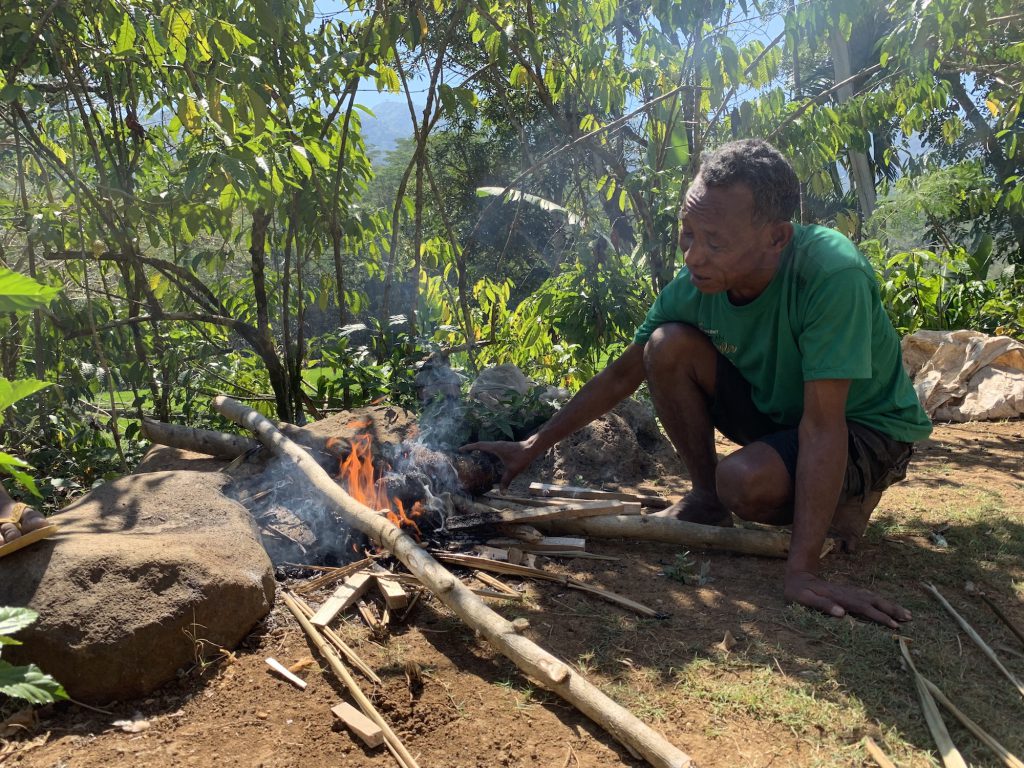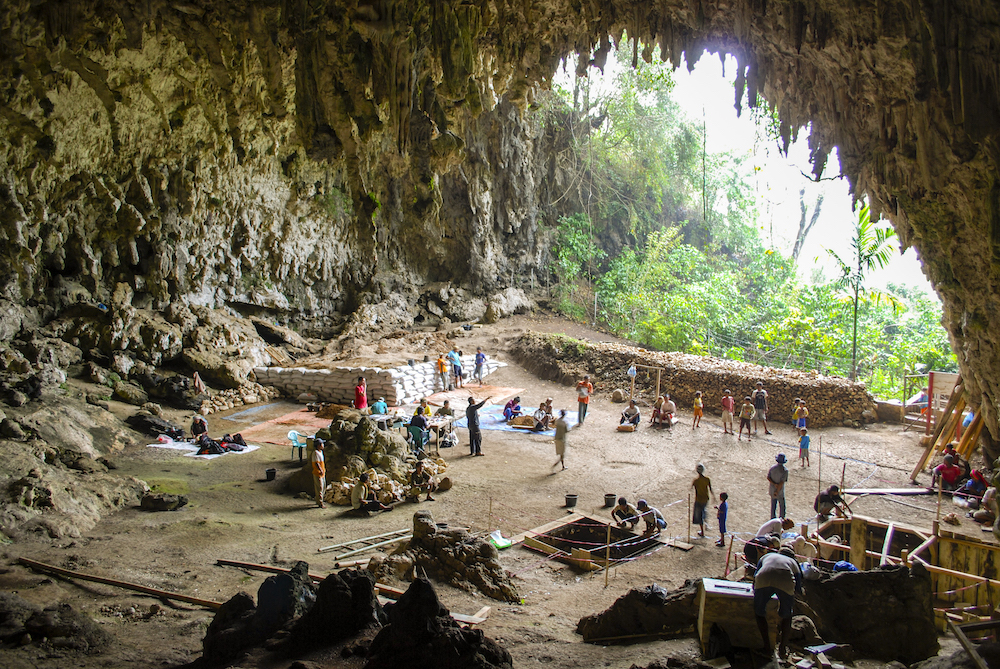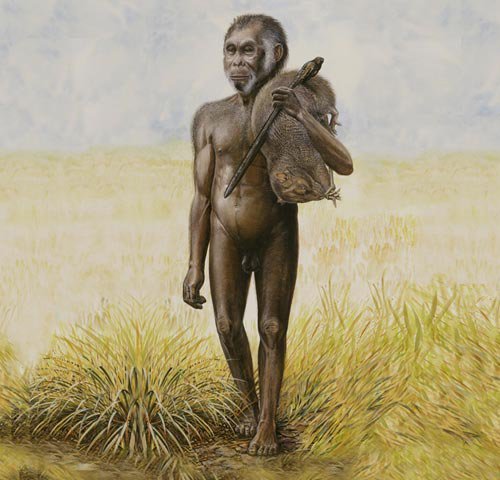How Eating Rat Stew Serves Hobbit Research

“Don’t forget to save every last bone!” zooarchaeologist Elizabeth Veatch called across the patio to me and our Indonesian teammates. We nodded, our mouths full of turmeric-spiced meat. Then we plucked tiny bones from our teeth and placed them in a Tupperware container.
We were sitting in a village called Teras on the island of Flores, and it was my first time eating rat. But this wasn’t just any rodent. It was a Flores giant rat (Papagomys armandvillei), which grows as long as a raccoon and tastes like oily rabbit, with a strong stench.
Nor was this just any lunch. Veatch and her colleagues will examine these butchered, stewed, and chewed rat bones to uncover secrets about the diets and behaviors of mysterious ancient hominins.
The inspiration for our rat-based lunch came from a limestone cave nestled in a nearby hillside: the archaeological site known as Liang Bua. This cave is where the fascinating, controversial human relative Homo floresiensis was discovered in 2003. This island species—nicknamed “hobbits” by the research team—surprised the scientific community with its small stature, chimpanzee-sized brain, and ability to make and use stone tools.
The hobbits’ mixture of unexpected anatomy, location, and existence within the last 100,000 years initially sparked debates over whether they were a new species. But after 16 years of analyses and excavations at Liang Bua, the controversy has simmered as scientists have reached a broad consensus that hobbits are indeed a new species.
Now, scientists are zeroing in on research questions that reveal what life might have been like for hobbits 75,000 years ago. How did these 1-meter-tall hominins survive on a volcanic, mountainous island prowled by Komodo dragons and giant vultures? What foods did they eat, and how did they obtain them? And what can the eating habits of hobbits tell us about hominin lifestyles around the world?
To attempt to untangle these queries about the hobbit diet, researchers have turned to the bones of the other creatures that roamed the region—especially the rats.
Around the village of Teras, Veatch is affectionately known as Miss Tikus (“Miss Rat” in Indonesian). Working with Indonesian and other international researchers, the American zooarchaeologist is piecing together parts of the hobbits’ tale by studying the hundreds of thousands of rat bones recovered during archaeological excavations at Liang Bua. I’m joining the team to collect oral history interviews for my dissertation on H. floresiensis and the history of anthropology in Indonesia.
Veatch’s team has already made some intriguing discoveries. For example, the hobbits began to disappear from the cave area starting around 60,000 years ago, a finding that previously led researchers to think they went extinct. But after studying the size and age of the rat bones, Veatch and her team unlocked a new possibility.
They speculate that the area was once a relatively open habitat populated primarily by rodents of unusual size, weighing about 3.5 kilograms. Then, about 60,000 years ago, the forest became denser and the rats smaller. These environmental shifts may have prompted the hobbits and other Liang Bua creatures to migrate to more hospitable locations, where they potentially lived on and possibly even encountered the modern humans who landed on Flores by about 46,000 years ago.
Veatch and her fellow rodent enthusiasts also learned that Manggarai people who live near and excavate in this cave sometimes hunt, butcher, and eat giant rats. In fact, it was this community who invited us to eat lunch with them that day in Teras.
This community’s cuisine of giant rats led Veatch and the team to wonder: Did H. floresiensis also hunt rats? And did the hobbits make stone tools for the purpose of eating these furry forest dwellers?
Answering these questions can offer clues to a larger mystery: Was hunting small animals a good foraging strategy for early hominins around the world? To resolve that enigma, researchers must consider how much energy hunters expended while foraging for miniature mammals versus how much energy they gained from eating the meat.
Veatch is part of an emerging group of archaeologists who argue that the importance of smaller mammals in early hominin diets may have been underestimated. Though mammoths and other megafauna captivate the imagination, they are difficult to hunt—and therefore calorically costly and caught relatively infrequently.
The researchers posit that small game could have been an equally important, more consistent, part of hominins’ day-to-day subsistence. Studies suggest this may be the case for some modern hunter-gatherers.
“People always think of megafauna when they think of meat,” Veatch explained to me between bites of rat stew. “But I want to show that rat can feed a lot of people.” Indeed, on that day in Teras, eight of us happily munched on our meal of spiced rat with rice.
But inferring the eating habits of hobbits and other extinct human relatives is a difficult task. So, scientists have to use creative techniques—such as modern rat gastronomy.
On the day of our lunch in Teras, Veatch watched intently as her Manggarai hosts butchered, cooked, and ate the giant rat. Each of these actions potentially left marks on the bones.
Our Manggarai chef, Kamelus Nampung, first skewered the rat, then seared it over an open flame to remove the fur. This can blacken the skeleton or teeth with burn marks. Next, he cut the meat from the bone using sharp stone tools, which often leave distinctive V-shaped incisions. Finally, as we chewed the rat stew, our teeth occasionally imprinted tiny telltale depressions and scrapes on the bones.
This is why Veatch wanted us to save all the bones—so she could later scrutinize them under a high-power microscope, then compare them to the ancient rat bones at Liang Bua. If rats were indeed central to the hobbit diet, she would expect to find similar markings on both sets of bones.
Veatch and the Liang Bua team need to examine 12,000 bits of rat legs, teeth, and jaws.
This method is called taphonomy—the study of what happens to bones after an animal has died, from butchering and cooking to crushing and fracturing. Taphonomic analyses can be extremely tricky. Veatch must analyze every scrape, chip, and fissure in the ancient bones, and determine whether the marks might have been caused by Komodo dragon teeth, bird digestion, weathering, trampling, or the culinary actions of hobbits.
If the scientists aren’t careful, they might misconstrue the taphonomy and come to a false conclusion. One famous error occurred in South Africa when a scientist interpreted broken bones as evidence of hominin violence and cannibalism. Later studies revealed the bones had been gnawed by hyenas.
To avoid such mistakes, taphonomists need a trained eye, a powerful microscope, and a large dataset. Fortunately, Liang Bua excavators like Romanus Jehaman and Stanis Mbembak are assisting Veatch. If someone in their village has killed a giant rat, they try to save the bones for “Miss Tikus” to study.
Veatch and the Liang Bua team still need to finish examining a collection of ancient rat bones—a modest assortment of 12,000 bits of tiny legs, teeth, and jaws—before they can draw definitive conclusions about hobbit behavior.
In the meantime, Veatch and I will hopefully spend more lunch breaks munching on meat that the Manggarai people so generously share, learning about their traditional practices, and, when asked how the rat tastes, replying enak sekali (very delicious).


































